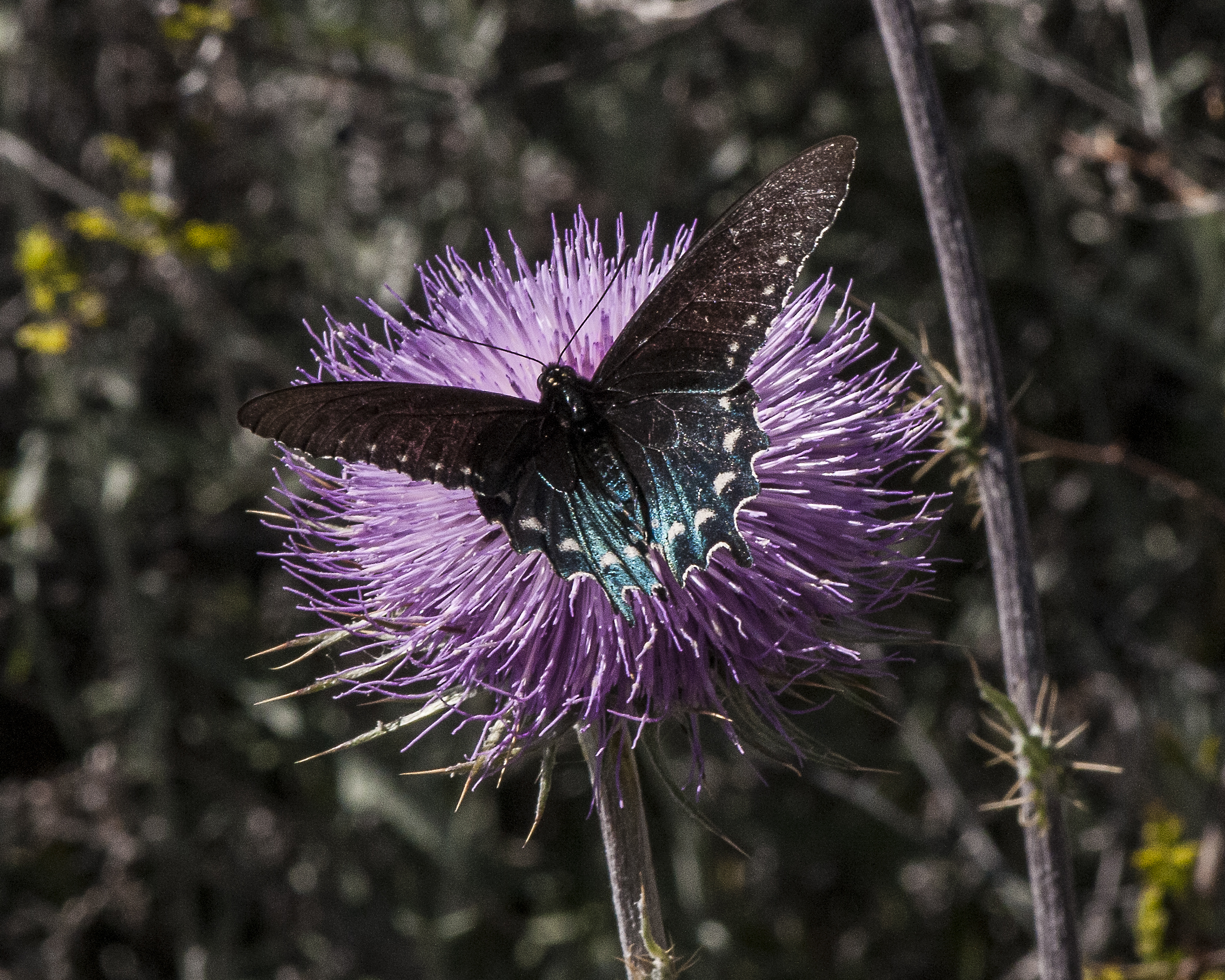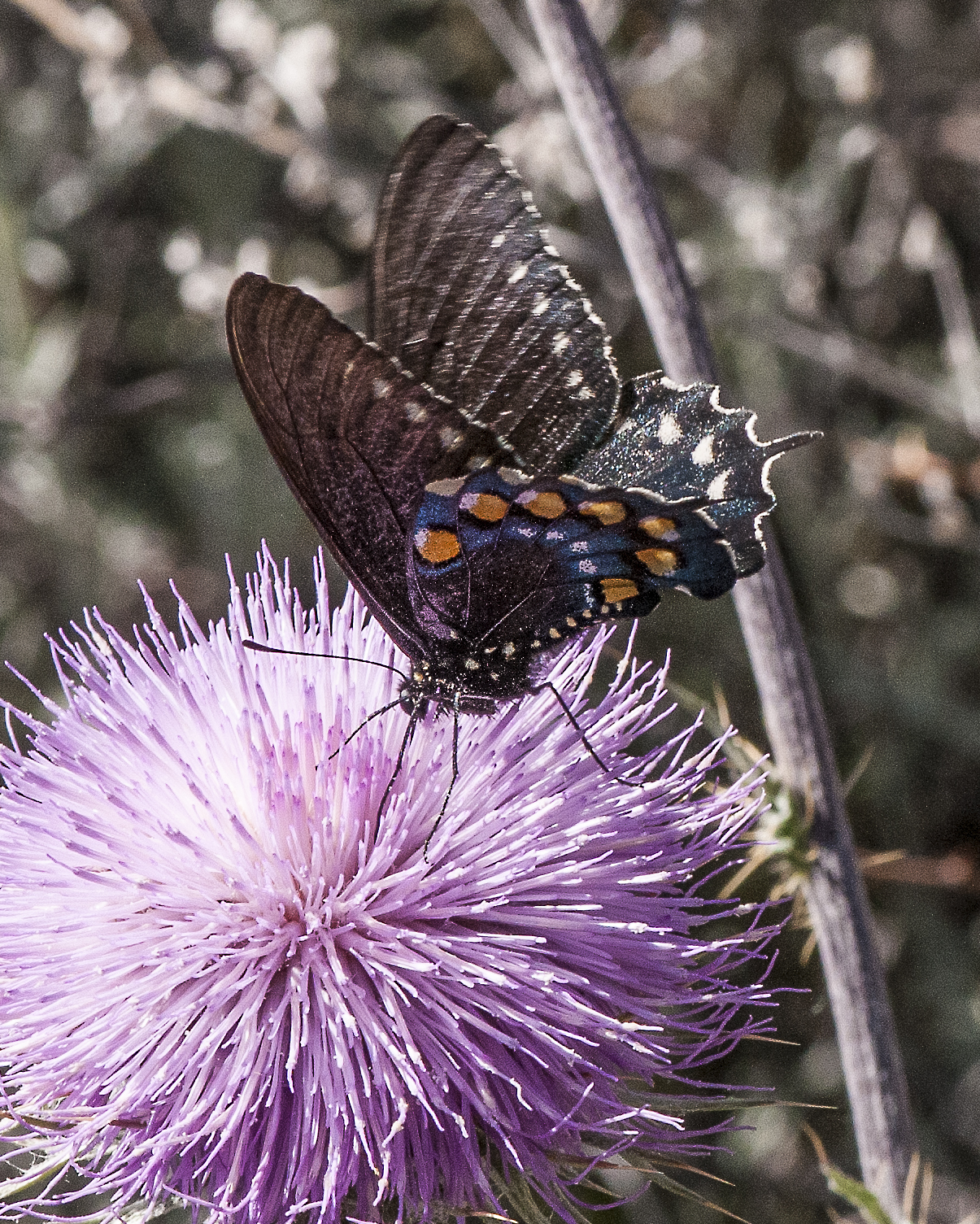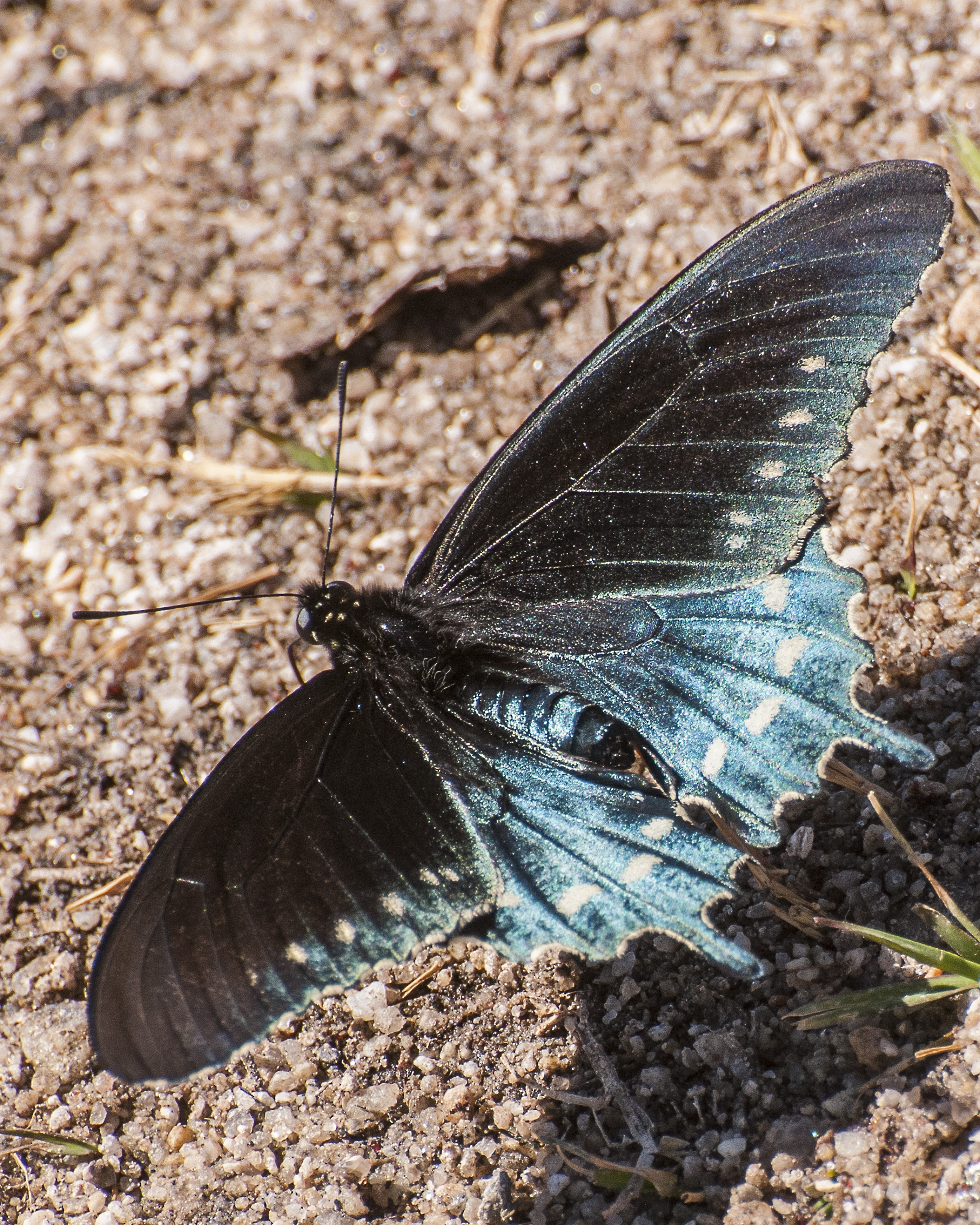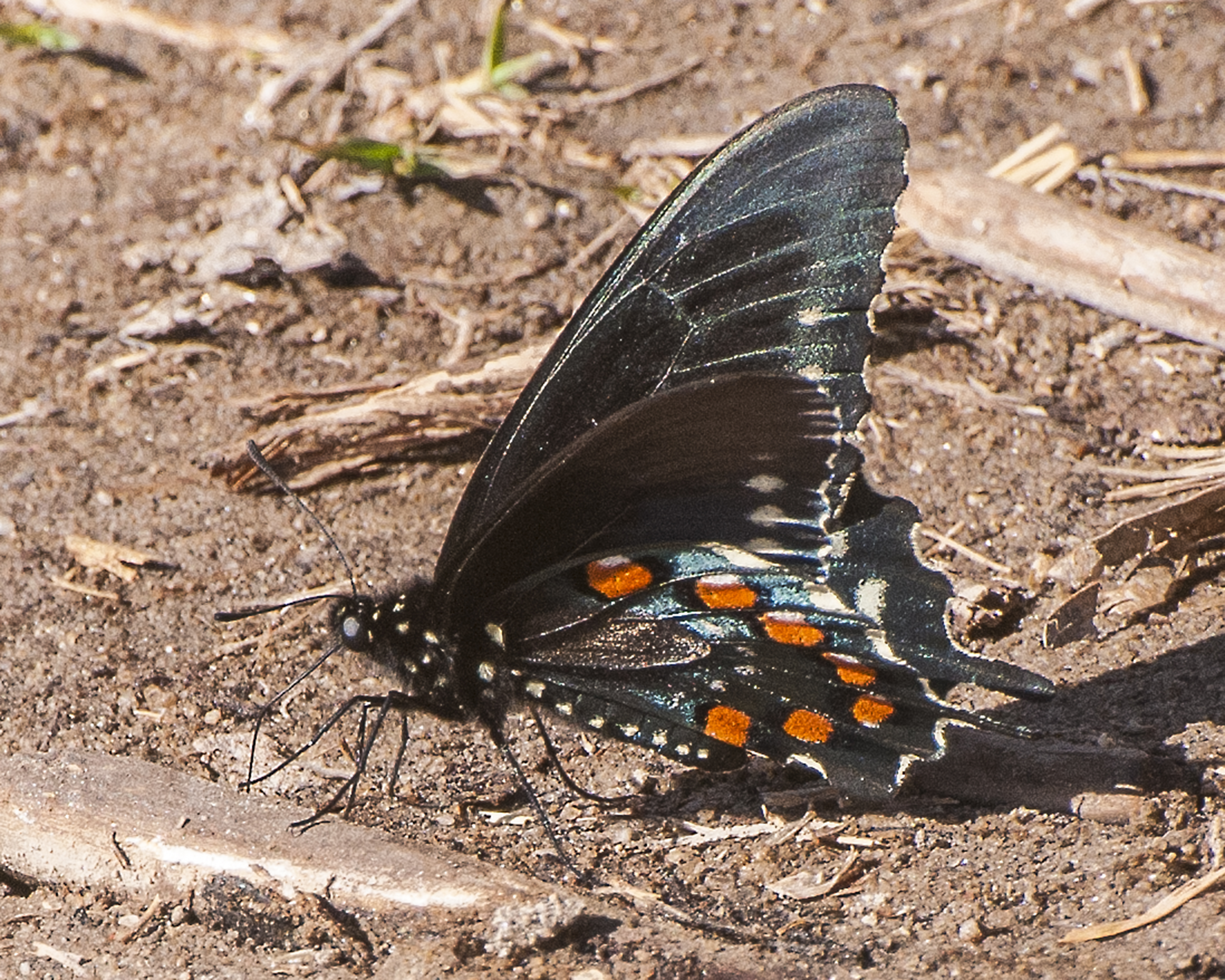


 Sabino Canyon 2/11/22
Sabino Canyon 2/11/22
 Sabino Canyon 2/11/22
Sabino Canyon 2/11/22

The upper surface of the hindwings are an iridescent blue or blue green with pale, arrowhead markings. Males have brighter metallic regions than females. The underside of the hindwing has seven orange submarginal spots surrounded by iridescent blue. Both surfaces of the forewings are black or dull blackish brown. Individuals of the Northern California subspecies, Battus philenor hirsuta, are smaller and hairier. Pipevine swallowtails can have a wingspan up to 3 1⁄2 inches (89 mm). It can usually be found in fields, meadows, gardens, parks, open woods, roadsides and stream sides.
The pipevine swallowtail is seen from April to October in the northern portion of its range and from February to November in the southern portion. There are two broods in the north and three or more in the south. Males patrol for females in suitable habitats. Females will lay clusters of one to twenty reddish-brown eggs on the underside of host plant leaves. Young caterpillars are gregarious, while older larvae are solitary. The caterpillars will eat the leaves, stems, and seed capsules of the host plant. The larvae are either black or smoky red. Many fleshy filaments project from the sides of the body, the longest being on the anterior end. Over the dorsal part of the body are two rows of orange-red warts. The chrysalis is brown or green, with two horns on the head, a point on the thorax, and a ridge on each side of the abdomen. The abdomen is often patched with yellow. The chrysalis hibernates in areas with cold winters.